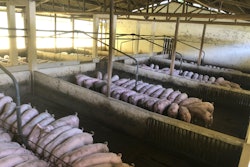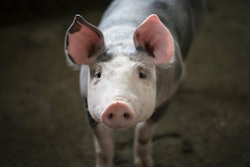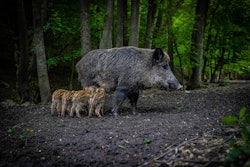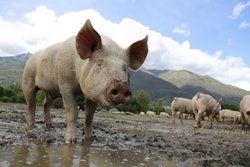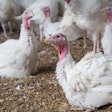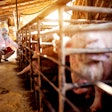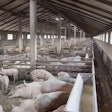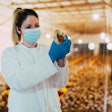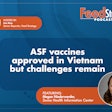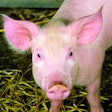
Control measures such as depopulation and limiting the movement of animals may effectively reduce the spread of the African swine fever (ASF) virus, but they may not be enough to completely control the disease within 140 days of an outbreak in the southeastern U.S., according toanalysisfrom the North Carolina State University College of Veterinary Medicine.
Planned control measures reduced the spread of the disease by nearly 80% in computer simulations run by the university. But, at the end of the 140-day simulation, only 20% of the hypothetical models had the virus completely under control, according to Gustavo Machado, an assistant professor of population health and pathobiology at North Carolina State University. Those figures assume that all of the outbreaks are detected as soon as the first infected pigs begin showing observable signs of the disease, said Machado, who described the scenarios from the models as “optimistic.”
This doesn’t mean, Machado said, that the U.S. would be unable to control an outbreak of ASF. But it could take longer than the 140 days modeled by the simulation. The university is running a revised version of the simulation to determine what it would take to control the virus in 60 days, 140 days, and six months. The updated model will also include data from more farms and project the potential spread of the virus outside of the southeastern U.S.
But the initial round of modeling, which was funded by the U.S. Department of Agriculture and is based on data from more than 2,000 real-world farms, as well as from past outbreaks of now-endemic diseases, including porcine epidemic diarrhea virus, revealed some important clues about how the ASF virus could spread. In the model, direct contact between pigs was responsible for an average of 71.1% of the hypothetical cases of ASF. Indirect spread via the movement of contaminated trucks and vehicles caused 14.4% of cases, while local factors such as transmission between wildlife and local farms accounted for 14.6% of cases.
In general, most U.S. farms are good at restricting commingling of animals from multiple farms — a key driver of the spread of disease. However, a small number of farms that tend to comingle animals from as many as 15 or 16 different farms would have a higher risk of contracting and spreading the virus during an outbreak.
Machado also noted that the model demonstrates controlling an outbreak of ASF would be easier if the virus were first introduced at a finisher site rather than a sow farm. Sow farms tend to have better biosecurity measures than finishing sites, so an introduction at sow farm is less likely.
But the model highlighted the importance of testing and screening measures for ASF, Machado said. Testing every animal before an outbreak begins may be cost prohibitive, he said, but the U.S. should continue to advance existing surveillance measures and efforts to train more people to collect and analyze blood samples for ASF. In the event of an outbreak, the model showed that insufficient testing capacity created a bottleneck due to the large number of samples that would need to be processed. The U.S. could also consider more stringent screening measures for high-risk farms, such as those where animals from a large number of sites comingle, in order to detect and control an outbreak earlier, Machado said.





